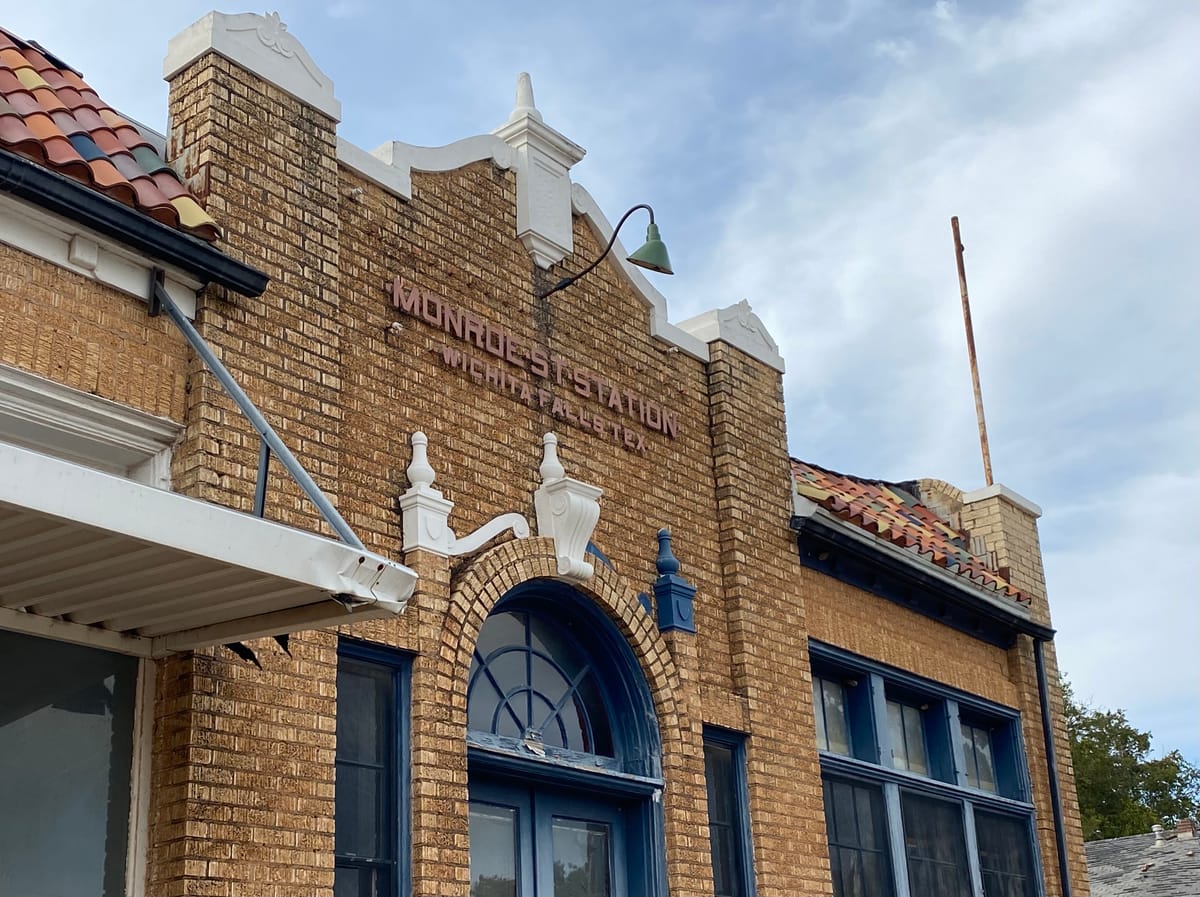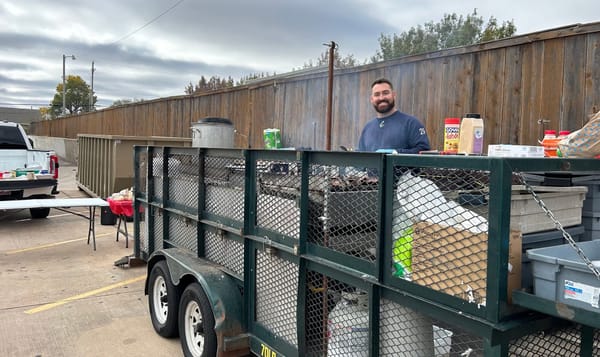Wichita Falls historic preservation efforts reflect on the past for sake of the future
In addition to the fiscal impact of historic preservation, Montgomery-Gagne shared that it also sets a city apart from other cities to put the stories of its past on display – it demonstrates what makes a place unique.

Several cities in the Texoma area are transitioning toward ‘modern’ when it comes to city planning. Between trying to take steps toward modernization and trying to minimize the available spaces for the unhoused to occupy, some cities in the area are doing away with the old and bringing in the new.
The City of Lawton (COL) is one example that is following this process. In the last year, Lawton City Council has vamped up efforts to demolish structures that are deemed dangerous or dilapidated for any number of reasons, from missing roof shingles to nuisance complaints. Mayor Stan Booker often speaks of progress, yet this approach has decreased the number of structures in town that predate the 50s, according to tax records associated with most houses on the COL Dangerous and Dilapidated (D&D) list in the Spring of 2025.
The City of Wichita Falls, on the other hand, has made extensive efforts to repair and preserve many of the old buildings in town. This has resulted in more affordable rent and leasing prices, as well as a visual representation of the city’s rich history.
Karen Montgomery-Gagne, the Principal Planner/Historic Preservation Officer for the City of Wichita Falls Planning Division said these efforts of historic preservation began in the 1980s. By 1984, the city had received its first landmark designation from the Department of Interior for a building and established its first historic commercial district, Depot Square. Montgomery-Gagne said that since that time, 28 properties have been able to obtain landmark status. Additionally, the first local residential historic district was established in 2005, known as West Floral Heights.
According to a 2004 excerpt from the Depot Square Historic District National Register Nomination Research, a particular structure that has been preserved through the city’s efforts is the J.F. Keller building. Built between 1886 and 1890, it originally served as a saddlery and hardware shop and is believed to be the oldest two-story building in town. The same register listed the Berry Brown House, circa 1882, as the oldest house.
Montgomery-Gagne said that the city received a Certified Local Government (CLG) from the Department of Interior on March 20, 2022, after it was recommended by the Texas Historical Commission. She expanded on the process, saying that extensive work was required to reach the necessary criteria to meet the minimum requirements for the preservation program standards.
“A CLG designation reflects that a community maintains certain standards with their historic preservation program and upholds them annually in order to remain in good standing,” Montgomery-Gagne stated.
Further, the CLG designation provides several benefits that would otherwise be difficult to obtain. These include resource networks across Texas and grant eligibility. These resources allow the city to enhance preservation efforts, as well as inform the community on the importance of these efforts.
Such efforts toward historical preservation have undoubtedly been the saving grace for many structures around Wichita Falls, however the rules change when it comes to privately-owned properties that meet historical standards but are in need of repair. Montgomery-Gagne said that the city is limited in what it can do in these instances. It essentially comes down to two options, add the property to the hazardous structures list, or provide information and resources about how to achieve or obtain assistance with repairs. Montgomery-Gagne said this is especially relevant to owner-occupied single-family homes.
Alex Peregrino, CDBG/HOME Program Supervisor, said there are several external resources to assist with such repairs. On a local level, the city offers a Minor and Emergency Repair Program that assists low to moderate-income residents with financial assistance for critical repairs.
While the process for properties being added to the Dangerous and Dilapidated structures list in Wichita Falls is the same as Lawton’s, Wichita Falls seems to provide more resources or access to information about resources than its Oklahoma counterpart. Beyond that, according to details shared by Code Compliance Supervisor Alex Borrego, the city doesn’t have the same expedited timeline for addressing such structures, allowing more consideration to property owners that require more time.
Montgomery-Gagne noted that the goal of the D&D list is not to demolish structures, but to encourage up-keep so buildings and homes don’t get to the point of disrepair. If a structure is a concern, it is added to what Montgomery-Gagne described as a “watch list” in which damage is monitored and property owners are contacted about determining a solution, especially if the property is vacant.
Montgomery-Gagne said they encourage owners to take care of old structures because the city views their preservation as more valuable than their demolition. She said there are numerous reasons why the city prefers old buildings and homes to new ones. These include the fact that they’re made of “green materials” that are more commonly naturally derived, which prevents further waste in landfills, they provide more affordable housing options, they support cultural vitality, preservation creates jobs, and much more.
“Historic buildings and architecture are valuable and play an important role in shaping our future. Older buildings have a proven track record of being more sustainable and help foster a sense of place, such as downtown Wichita Falls - it's the heart of the city and has the most unique collection of historic architecture in the community,” Montgomery-Gagne added.
Montgomery-Gagne also stated that the city offers resources to assist with historical preservation efforts for private owners too. She clarified that these resources generally apply to properties that are deemed eligible to be listed on the National Register of Historic Places. They include local tax freezes and historic tax credits. There is a process for being approved for these options and more information on them can be obtained through the City of Wichita Falls’ Neighborhood Resources Division.
While there are a few options for assistance in pursuing preservation of historical structures, Montgomery-Gagne did note that there are no city funds set aside to assist property owners in the process. The Development Services Department does address historic preservation in part of its budget, though. She added that in previous years, specific funds were used for applications for Texas Historical Commission CLG Matching Grants.
Montgomery-Gagne said that the money and effort the city invests in its historical preservation has proven to be worthwhile. She said this is reflected in tourism rates, revenue and tax credits associated with popular historic locations around the city, such as the Kell house and The World’s Littlest Skyscraper. She added that a 2015 Report on the Economic Impact of Historic Preservation in Texas shows that heritage tourism across the state contributed $70.5 billion annually and resulted in 54,000 jobs.
In addition to the fiscal impact of historic preservation, Montgomery-Gagne shared that it also sets a city apart from other cities to put the stories of its past on display – it demonstrates what makes a place unique. She believes it’s important for the youth growing up in the city to see the work and legacies of those who came before them, especially for those with ancestral ties to Wichita Falls.
“Without preserving and protecting our past, what does our future look like?” Montgomery-Gagne asked. “Our community history – in the stories passed through generations and experiencing the architecture and events that have shaped and spanned decades, if not centuries – creates a sense of place, and that is truly priceless.”




